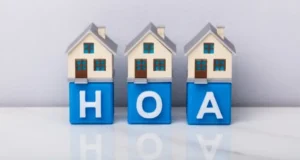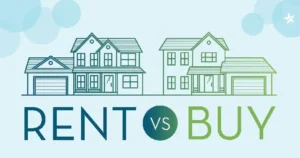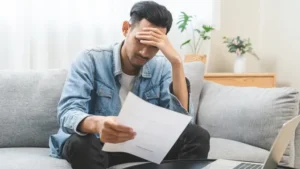For many first-time homebuyers, the down payment can feel like a major hurdle. Understanding how much people typically put down can help you create a smart financial plan.
The average down payment in the U.S. is about 13.6% of the home’s purchase price, according to the National Association of Realtors (NAR).
For a $400,000 property, that equals around $54,400. However, this amount varies based on factors like loan type, location, and whether you’re a first-time or repeat buyer.
The typical American homebuyer puts down about 13.6% on a house, but it can be lower or higher depending on the specific loan program, credit profile, and local market conditions.
Understanding Down Payments: The Basics
A down payment is the upfront cash you pay at closing, usually expressed as a percentage of the property’s purchase price. Your mortgage generally covers the rest. The size of your down payment influences your monthly mortgage payments, your interest rate, and whether you must pay for private mortgage insurance (PMI). For many first-time homebuyers, figuring out how much to save—and why it matters—is the first big step in the home-buying journey.
A down payment is simply the initial cash you invest in your home, which helps reduce the amount you need to borrow and can affect your mortgage options and costs.
Why Down Payments Vary
No two homebuyers will have exactly the same down payment, especially first-timers who often have tighter budgets. Here’s a closer look at why these amounts differ:
- Loan Type: Conventional loans may require 5–20% down, while FHA loans allow as little as 3.5% and VA and USDA loans can go down to 0% for those who qualify.
- Credit Score: Buyers with higher credit scores may qualify for programs that require a lower down payment.
- Location: In pricier regions like San Francisco, even 10% of the home’s cost can be a very large dollar amount.
- Buyer Type: First-time buyers often choose smaller down payments to get into a home sooner, whereas repeat buyers may have home equity to roll into the purchase.
Down payments vary based on your loan type, credit score, local market conditions, and whether you’re a first-time or repeat buyer.
Average Down Payment by Numbers
The National Association of Realtors reported in 2024 that the average down payment is 13.6%. This figure shifts depending on your situation:
| Buyer Type | Average Down Payment (%) | Average Down Payment ($) for $400,000 Home |
|---|---|---|
| First-Time Buyer | 8% | $32,000 |
| Repeat Buyer | 19% | $76,000 |
| All Buyers | 13.6% | $54,400 |
While the national average is around 13.6%, first-time buyers often put down closer to 8%, and repeat buyers may contribute closer to 19%.
Down Payments by Loan Type
Each type of mortgage has its own minimum down payment requirements. If you’re a first-time homebuyer, pay special attention to government-backed options that can reduce your upfront costs.
| Loan Type | Minimum Down Payment | Key Notes |
|---|---|---|
| Conventional | 5–20% | PMI required if less than 20% |
| FHA | 3.5% | Allows lower credit scores; check FHA guidelines |
| VA | 0% | For eligible veterans and service members |
| USDA | 0% | For rural buyers meeting certain income limits |
Conventional loans typically require 5–20%, but government-backed options like FHA, VA, and USDA can reduce or eliminate the need for large down payments.
Factors That Influence Your Down Payment
Deciding on your down payment amount goes beyond how much you have in your savings. Here are a few elements that play a big role, especially for first-timers:
1. Home Price and Market Conditions
If you’re looking in high-cost areas—like many parts of California or New York—a smaller percentage can still be a huge sum of money. According to the NAR, the median U.S. home price is around $412,000, but in some coastal cities, it can be much higher. Conversely, a 10% down payment on a home in the Midwest may be significantly more affordable.
High-cost markets mean higher down payments in dollar terms, even if your percentage is the same as buyers in less expensive regions.
2. Your Financial Situation
Lenders consider your savings, income, and calculate your debt-to-income (DTI) ratio to determine what you can afford. If you have student loans or credit card debt, you may choose a lower down payment to retain cash for monthly obligations. On the other hand, a bigger down payment could mean lower mortgage payments, which might free up your budget in the long run.
Your existing debts and monthly income affect how much you can comfortably put down without stretching your budget too thin.
3. Mortgage Insurance
Putting down less than 20% on a conventional loan usually triggers private mortgage insurance (PMI), which can add $100–$300 to your monthly payment. FHA loans have mortgage insurance premiums (MIP) regardless of down payment size, though these costs may be reduced or removed over time under certain conditions.
Less than 20% down generally means you’ll pay mortgage insurance, adding to your monthly expenses.
4. First-Time Buyer Programs
Many states and local governments offer down payment assistance programs for first-time buyers, such as grants, forgivable loans, or tax credits. For example, CalHFA in California can cover up to 3.5% of your home’s cost, potentially eliminating the need to save for years. These programs vary by location, so check your state’s housing agency website or HUD’s official state resources for current details.
If you qualify, down payment assistance programs can significantly reduce or even eliminate your upfront cost.
Pros and Cons of a Larger Down Payment
If you have the funds to put down more than the minimum, you might benefit in the long term—but there are trade-offs.
- Pros:
- Lower monthly mortgage payments
- No PMI if you reach 20% down on a conventional loan
- Less interest paid over the loan’s life
- Cons:
- Ties up cash you might need for emergencies or repairs
- Could take years to save, potentially delaying homeownership
- Opportunity cost if you might earn more by investing the money
A bigger down payment can lower monthly costs and save you money over time, but it also requires more upfront savings that might be needed elsewhere.
How to Save for a Down Payment
For first-time homebuyers, saving tens of thousands of dollars can feel overwhelming. The good news is that small, steady strategies build up quickly. Here’s how:
- Create a Budget: Track your income and expenses in detail. Cut back on extras like frequent takeout or unused subscriptions.
- Open a High-Yield Savings Account: Look for accounts offering 4–5% APY to earn more on your funds.
- Automate Savings: Schedule monthly transfers from your checking to your down payment fund so you’re not tempted to spend it.
- Explore Assistance Programs: State and local programs might offer grants or zero-interest loans to cover part of your down payment.
- Start a Side Hustle: Whether it’s freelancing, ride-sharing, or online tutoring, extra income can boost your savings.
A combination of budgeting, high-yield savings, automated deposits, homebuyer assistance programs, and side hustles can help you reach your down payment goal faster.
Real-World Example: Down Payment Scenarios
Imagine you want to buy a home priced at $350,000. Here are a few ways your down payment might look:
- FHA Loan (3.5%): Approximately $12,250 down, plus monthly MIP.
- Conventional Loan (10%): About $35,000 down, with PMI added to your mortgage payment.
- 20% Down: $70,000 upfront, eliminating PMI and reducing your monthly payment.
Depending on your loan type, a down payment for a $350,000 home can range from around $12,250 (FHA) up to $70,000 (20% conventional), with each scenario affecting your monthly costs and long-term financial obligations differently.
Frequently Asked Questions
- What is a typical down payment on a house?
It’s about 13.6%—around $54,400 on a $400,000 home—according to NAR. First-timers often pay closer to 8%. - Can I buy a house with no down payment?
Yes. VA and USDA loans allow 0% down for eligible groups (veterans or rural buyers). Some states also offer assistance programs. - Is 5% enough for a down payment?
Many conventional loans accept 5% down, but you’ll usually need PMI. Check your lender’s requirements and compare loan options. - How much should I save for a down payment?
Aim for 5–20% of the home’s price plus 2–5% for closing costs. For a $400,000 home, that’s $20,000–$80,000 plus $8,000–$20,000 in fees. - Does a bigger down payment lower my mortgage rate?
It can. Lenders may offer better rates for larger down payments since it reduces their risk. Always ask your lender for specifics. - What’s the downside of a low down payment?
You’ll face higher monthly payments, added mortgage insurance, and more interest over the life of the loan. - Can I use a gift for my down payment?
Yes. Most loans allow gift funds from family, but you’ll need a gift letter confirming you’re not required to repay the money. - How long does it take to save for a down payment?
It depends on your savings rate. Setting aside $500 monthly could take around six to seven years to build $40,000. - Do down payment requirements differ by state?
Loan requirements don’t change by state, but home prices do—so a 10% down payment in California is often higher in dollar terms than in Ohio. - Can I negotiate my down payment?
Generally, no. The down payment is determined by your loan terms and lender. However, you can shop for different loan programs or assistance.
Next Steps for Homebuyers
If you’re ready to purchase your first home, start by checking your credit score and setting clear savings goals. Talk to a lender or mortgage broker to get pre-approved, which shows sellers you’re serious. If a big down payment isn’t feasible right away, look into low-down-payment loans or down payment assistance programs in your area. Above all, remember that every little bit saved brings you closer to owning your first home.
Short Answer: Begin with a credit check, explore loan options and assistance programs, and set realistic savings goals to move closer to homeownership.
















